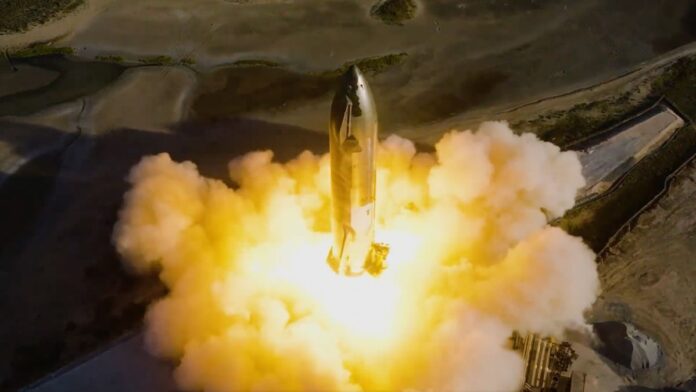SpaceX’s next Starship vehicle has breathed fire for the first time.
SpaceX performed a static fire test on Monday evening (June 26) with Ship 25, the upper-stage prototype that will launch on the second-ever mission of a fully stacked Starship.
SpaceX lit all six of Ship 25’s Raptor engines for about five seconds during the test, which took place at 8:27 p.m. EDT (0027 GMT on June 27) at the company’s Starbase site in South Texas.
Related: Relive SpaceX’s explosive 1st Starship test flight in these incredible launch photos
Ship 25 completes a six-engine static fire test at Starbase in Texas pic.twitter.com/wCCrh0RRNAJune 27, 2023
Static fires are common prelaunch tests in which a rocket’s engines are briefly ignited while the vehicle remains anchored to the ground. The coming launch for Ship 25 could be just six weeks or so away, SpaceX founder and CEO Elon Musk has said.
On that flight, a first-stage prototype called Booster 9 will send Ship 25 skyward from Starbase. The upper-stage vehicle will aim to do a partial circuit around Earth, ultimately splashing down in the Pacific Ocean near Hawaii.
Those were also the aims of the first-ever full-up Starship test launch, which occurred on April 20 from Starbase. The vehicle notched a number of milestones on that debut flight, which reached a maximum of 24 miles (39 kilometers) above Earth.
But Starship experienced several problems that day — most notably, the failure of its two stages to separate as planned — and SpaceX sent a self-destruct command a few minutes into flight.
Monday’s static fire didn’t come out of left field. On Thursday (June 22), SpaceX conducted a “flight-like chill and spin” of Ship 25’s engine pumps, describing the test as a precursor to a static fire.
Starship, which stands 394 feet (120 meters) tall fully stacked, is the largest and most powerful rocket ever built. The 33 Raptors of its first-stage booster, known as Super Heavy, generate about 16.7 million pounds of thrust at liftoff, nearly twice the total of NASA’s Space Launch System megarocket.
Starship is also designed to be fully and rapidly reusable, a breakthrough that Musk believes will open the final frontier up to unprecedented exploration and exploitation.
His vision extends far into deep space. For example, NASA selected Starship as the first crewed lander for its Artemis moon program, and Musk envisions the vehicle enabling humanity’s first settlement on Mars as well.

